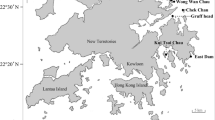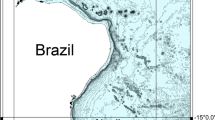Abstract
Dinoflagellates in the genus Symbiodinium, including nine clades (A–I), mainly form mutualistic symbioses with corals. More than 100 Symbiodinium molecular types have been identified by the ITS2-based genotype method within any given clade, and specifically within Symbiodinium clade C. However, the genotype identification method using the ITS2 sequence is likely to lead to high diversity estimates due to the intra-genomic variations in the ITS2 space; thus, further validation is essential for a correct identification. In this study, the molecular diversity of Symbiodinium ITS2 sequences cloned from two stone corals, Acropora sp. SY-01 and Pocillopora sp. SY-05, and one soft coral, Sarcophyton sp. SY-07, living in the northern part of South China Sea (SCS), were analyzed and compared using the ITS2-based genotype identification method, coupled with ITS2-based secondary structural and phylogenetic analyses. As the result, 12 Symbiodinium ITS2 genotypes were identified, while only six and three Symbiodinium ITS2 genotypes were supported by ITS2-based secondary structural and phylogenetic analyses, respectively. In addition, no shared Symbiodinium ITS2 genotypes were observed among the three coral species, suggesting coral species-dependent Symbiodinium genotypes were within clade C. In summary, the present study provides a theoretical basis for validating the molecular diversity of Symbiodinium ITS2 genotypes in corals.
Similar content being viewed by others
References
Arif, C., Daniels, C., Bayer, T., Banguera-Hinestroza, E., Barbrook, A., and Howe, C. J., 2014. Assessing Symbiodinium diversity in scleractinian corals via next-generation sequencing-based genotyping of the ITS2 rDNA region. Molecular Ecology, 23: 4418–4433.
Brown, B. E., 1997. Coral bleaching: Causes and consequences. Coral Reefs, 16: 129–138.
Baker, A. C., Starger, C. J., McClanahan, T. R., and Glynn, P. W., 2004. Coral reefs: Corals’ adaptive response to climate change. Nature, 430: 741.
Baker, A. C., 2003. Flexibility and specificity in coral-algal symbiosis: Diversity, ecology, and biogeography of Symbiodinium. Annual Review of Ecology Evolution and Systematics, 34: 661–689.
Barott, K. L., Venn, A. A., Perez, S. O., Tambutté, S., and Tresguerres, M., 2015. Coral host cells acidify symbiotic algal microenvironment to promote photosynthesis. Proceedings of the National Academy of Sciences, 112: 607–612.
Caporaso, J. G., Kuczynski, J., Stombaugh, J., Bittinger, K., Bushman, F. D., Costello, E. K., Fierer, N., Peña, A. G., Goodrich, J. K., Gordon, J. I., Huttley, G. A., Kelley, S. T., Knights, D., Koenig, J. E., Ley, R. E., Lozupone, C. A., McDonald, D., Muegge, B. D., Pirrung, M., Reeder, J., Sevinsky, J. R., Turnbaugh, P. J., Walters, W. A., Widmann, J., Yatsunenko, T., Zaneveld, J., and Knight, R., 2010. QIIME allows analysis of high-throughput community sequencing data. Nature Methods, 7: 335–336.
Dong, Z. J., Huang, H., Huang, L. M., and Li, Y. C., 2009. Diversity of symbiotic algae of the genus Symbiodinium in scleractinian corals of the Xisha Islands in the South China Sea. Journal of Systematics and Evolution, 47: 321–326.
Eldredge, N., and Cracraft, J., 1980. Phylogenetic Patterns and the Evolutionary Process: Method and Theory in Comparative Biology. Columbia University Press, New York, 349pp.
Falkowski, P. G., Dubinsky, Z., Muscatine, L., and Porter, J. W., 1984. Light and the bioenergetics of a symbiotic coral. Bio-Science, 34: 705–709.
Hunter, C. L., Morden, C. W., and Smith, C. M., 1997. The utility of ITS sequences in assessing relationships among zooxanthellae and corals. Proceedings of the Eight International Coral Reef Symposium, 2: 1599–1602.
Koetschan, C., Forster, F., Keller, A., Schleicher, T., Ruderisch, B., Schwarz, R., Muller, T., Wolf, M., and Schultz, J., 2010. The ITS2 Database III–Sequences and structures for phylogeny. Nucleic Acids Research, 38: 275–279.
LaJeunesse, T. C., 2001. Investigating the biodiversity, ecology, and phylogeny of endosymbiotic dinoflagellates in the genus Symbiodinium using the ITS region: In search of a ‘species’ level marker. Journal of Phycology, 37: 866–880.
LaJeunesse, T. C., Bhagooli, R., Hidaka, M., Done, T., de Vantier, L., Schmidt, G. W., Fitt, W. K., and Hoegh-Guldberg, O., 2004a. Closely related Symbiodinium spp. differ in relative dominance within coral reef host communities across environmental, latitudinal, and biogeographic gradients. Marine Ecology Progress Series, 284: 147–161.
LaJeunesse, T. C., Thornhill, D. J., Cox, E. F., Stanton, F. G., Fitt, W. K., and Schmidt, G. W., 2004b. High diversity and host specificity observed among symbiotic dinoflagellates in reef coral communities from Hawaii. Coral Reefs, 23: 596–603.
LaJeunesse, T. C., Bonilla, H. R., Warner, M. E., Wills, M., Schmidt, G. W., and Fitt, W. K., 2008. Specificity and stability in high latitude eastern Pacific coral-algal symbioses. Limnology and Oceanography, 53: 719.
LaJeunesse, T. C., Smith, R., Walther, M., Pinzon, J., Pettay, D. T., McGinley, M., Aschaffenburg, M., Medina-Rosas, P., Cupul-Magana, A. L., Perez, A. L., Reyes-Bonilla, H., and Warner, M. E., 2010. Host-symbiont recombination versus natural selection in the response of coral-dinoflagellate symbioses to environmental disturbance. Proceedings of the Royal Society B: Biological Sciences, 277: 2925–2934.
LaJeunesse, T. C., and Thornhill, D. J., 2011. Improved resolution of reef-coral endosymbiont Symbiodinium species diversity, ecology, and evolution through psbA non-coding region genotyping. PLoS One, 6: e29013.
Lien, Y. T., Fukami, H., and Yamashita, Y., 2013. Genetic variations within Symbiodiniumclade C among zooxanthellate corals (Scleractinia) in the temperate zone of Japan. Fisheries Science, 79: 579–591.
Muscatine, L., 1990. The role of symbiotic algae in carbon and energy flux in reef corals. Ecosystems of the World, 25: 75–87.
Oliver, T. A., and Palumbi, S. R., 2011. Many corals host thermally resistant symbionts in high-temperature habitat. Coral Reefs, 30: 241–250.
Pawlowski, J., Holzmann, M., Fahrni, J., Pochon, X., and Lee, J. J., 2001. Molecular identification of algal endosymbionts in large miliolid foraminifera: 2. Dinoflagellates. Journal of Eukaryotic Microbiology, 48: 368–373.
Pochon, X., and Gates, R. D., 2010. A new Symbiodinium clade (Dinophyceae) from soritid foraminifera in Hawaii. Molecular Phylogenetics and Evolution, 56: 492–497.
Pochon, X., Putnam, H. M., Burki, F., and Gates, R. D., 2012. Identifying and characterizing alternative molecular markers for the symbiotic and free-living dinoflagellate genus Symbiodinium. PLoS One, 7: e29816.
Pochon, X., Putnam, H. M., and Gates, R. D., 2014. Multi-gene analysis of Symbiodinium dinoflagellates: A perspective on rarity, symbiosis, and evolution. Peer J, 2: e394.
Putnam, H. M., Stat, M., Pochon, X., and Gates, R. D., 2012. Endosymbiotic flexibility associates with environmental sensitivity in scleractinian corals. Proceedings of the Royal Society B: Biological Sciences, 279: 4352–4361.
Rowan, R., and Powers, D. A., 1992. Ribosomal RNA sequences and the diversity of symbiotic dinoflagellates (zooxanthellae). Proceedings of the National Academy of Sciences, 89: 3639–3643.
Sampayo, E. M., Dove, S., and Lajeunesse, T. C., 2009. Cohesive molecular genetic data delineate species diversity in the dinoflagellate genus Symbiodinium. Molecular Ecology, 18 (3): 500.
Santos, S. R., and Coffroth, M. A., 2003. Molecular genetic evidence that dinoflagellates belonging to the genus Symbiodinium Freudenthal are haploid. The Biological Bulletin, 241: 10–20.
Santos, S. R., Gutierrez, R. C., and Coffroth, M. A., 2003. Phylogenetic identification of symbiotic dinoflagellates via length heteroplasmy in domain V of chloroplast largesubunit (cp23S)-ribosomal DNA sequences. Marine Biotechnology, 5: 130–140.
Santos, S. R., Taylor, D. J., Kinzie, R. A., Hidaka, M., Sakai, K., and Coffroth, M. A., 2002. Molecular phylogeny of symbiotic dinoflagellates inferred from partial chloroplast large subunit 23S-rDNA sequences. Molecular Phylogenetics and Evolution, 23: 97–111.
Schloss, P. D., Westcott, S. L., Ryabin, T., Hall, J. R., Hartmann, M., Hollister, E. B., Lesniewski, R. A., Oakley, B. B., Parks, D. H., Robinson, C. J., Sahl, J. W., Stres, B., Thallinger, G. G., Van Horn, D. J., and Weber, C. F., 2009. Introducing mothur: Open-source, platform-independent, community-supported software for describing and comparing microbial communities. Applied and Environmental Microbiology, 75: 7537–7541.
Silverstein, R. N., Correa, A. M. S., LaJeunesse, T. C., and Baker, A. C., 2011. Novel algal symbiont (Symbiodinium spp.) diversity in reef corals of Western Australia. Marine Ecology Progress Series, 422: 63–75.
Thomas, L., Kendrick, G. A., Kennington, W. J., Richards, Z. T, and Stat, M., 2014. Exploring Symbiodinium diversity and host specificity in Acropora corals from geographical extremes of Western Australia with 454 amplicon pyrosequencing. Molecular Ecology, 23: 3113–3126.
Takishita, K., Ishikura, M., Koike, K., and Maruyama, T., 2003. Comparison of phylogenies based on nuclear-encoded SSU rDNA and plastid-encoded psbA in the symbiotic dinoflagellate genus Symbiodinium. Phycologia, 42: 469–481.
Takabayashi, M., Santos, S. R., and Cook, C. B., 2004. Mitochondrial DNA phylogeny of the symbiotic dinoflagellates (Symbiodinium, Dinophyta). Journal of Phycology, 40: 160–164.
Thornhill, D. J., LaJeunesse, T. C., and Santos, S. R., 2007. Measuring rDNA diversity in eukaryotic microbial systems: How intragenomic variation, pseudogenes, and PCR artifacts confound biodiversity estimates. Molecular Ecology, 16: 5326–5340.
Thornhill, D. J., Xiang, Y., Fitt, W. K., and Santos, S. R., 2009. Reef Endemism, Host specificity and temporal stability in populations of symbiotic dinoflagellates from two ecologically dominant Caribbean corals. PLoS One, 4: e6262.
Tamura, K., Stecher, G., Peterson, D., Filipski, A., and Kumar, S., 2013. MEGA6: Molecular evolutionary genetics analysis Version 6.0. Molecular Biology and Evolution, 30: 2725–2729.
Tonk, L., Sampayo, E. M., Weeks, S., Magno-Canto, M., and Guldberg-Hoegh, O., 2013. Host-specific interactions with environmental factors shape the distribution of Symbiodinium across the Great Barrier Reef. PLoS One, 8: e68533.
van Oppen, M. J. H., Mieog, J. C., Sánchez, C. A., and Fabricius, K. E., 2005. Diversity of algal endosymbionts (zooxanthellae) in octocorals: The roles of geography and host relationships. Molecular Ecology, 14: 2403–2417.
Wicks, L. C., Sampayo, E., Gardner, J. P. A., and Davy, S. K., 2010. Local endemicity and high diversity characterise highlatitude coral–Symbiodinium partnerships. Coral Reefs, 29: 989–1003.
Zhang, H., Bhattacharya, D., and Lin, S., 2005. Phylogeny of dinoflagellates based on mitochondrial cytochrome b and nuclear small subunit rDNA sequence comparisons. Journal of Phycology, 41: 411–420.
Zhou, G., Huang, H., Zhang, C., and Li, X., 2012. Habitat correlation of Symbiodinium diversity in two reef-building coral species in an upwelling region, eastern Hainan Island, China. Journal of the Marine Biological Association of the United Kingdom, 92: 1309–1316.
Acknowledgements
This study was supported by the Major National Scientific Research Project, China (No. 2013CB956103) and the Minhang Leading Talent Project.
Author information
Authors and Affiliations
Corresponding author
Rights and permissions
About this article
Cite this article
Gong, S., Zhang, F. & Li, Z. Genotype and Phylogenetic Diversity of Symbiodinium ITS2 Sequences Within Clade C in Three Typical Coral Species from Luhuitou Fringing Reef of the South China Sea. J. Ocean Univ. China 17, 1411–1417 (2018). https://doi.org/10.1007/s11802-018-3628-1
Received:
Revised:
Accepted:
Published:
Issue Date:
DOI: https://doi.org/10.1007/s11802-018-3628-1




